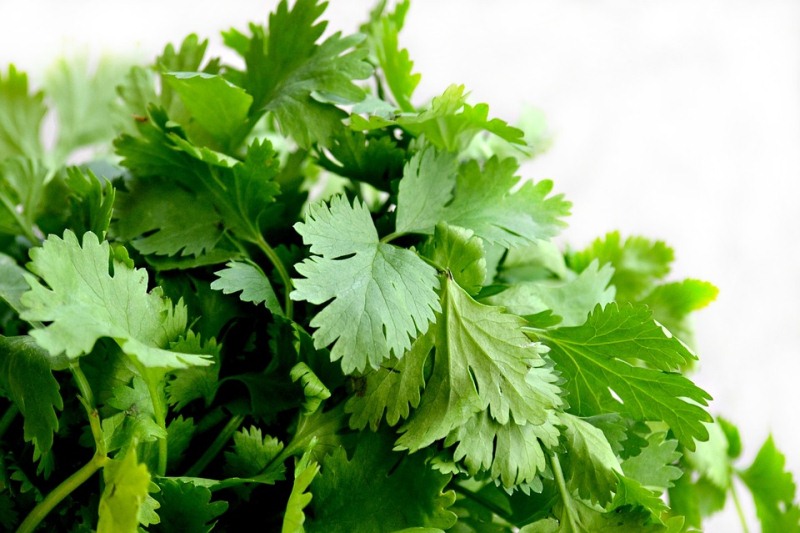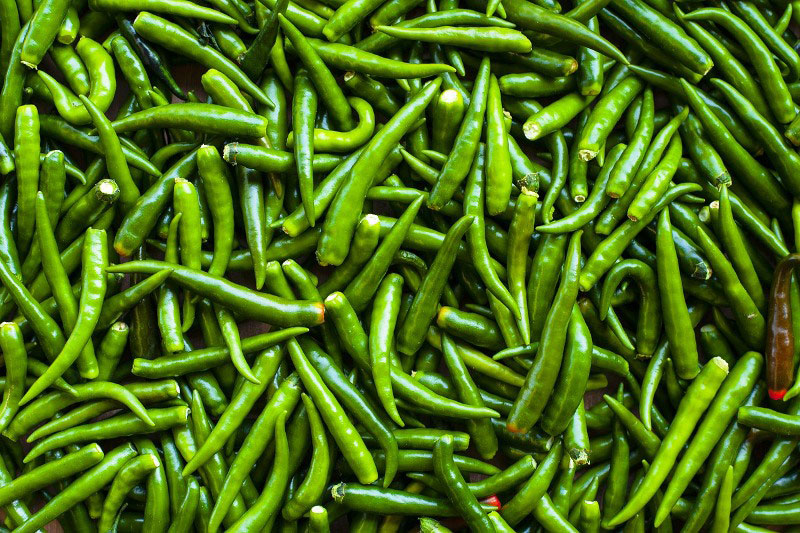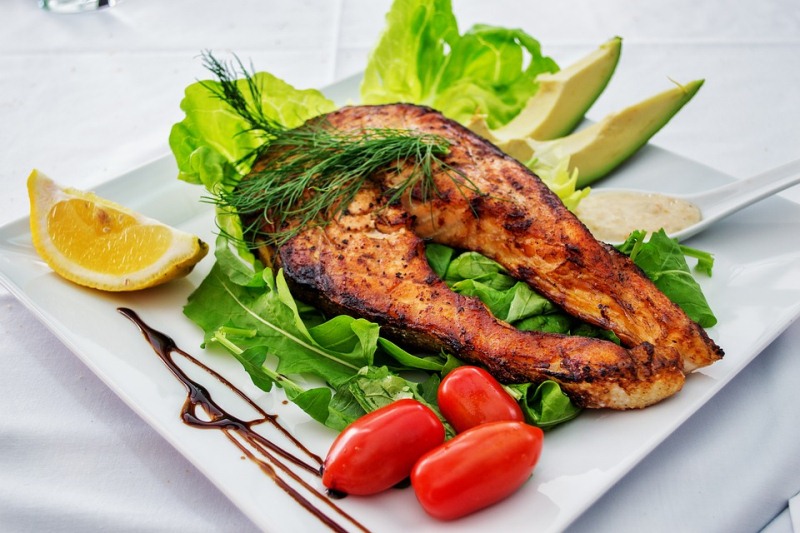To preserve vegetables fresh for long days – A few simple tips for you
Vegetables are abundant in nutrients and they should stay fresh and green if we need good results. But how can we keep vegetables for a long time with freshness till they are used for cooking? The common method adopted by all is to store them in refrigerator soon after purchase. If they are not stored properly, they may rotten in the refrigerator itself giving bad odour. You can’t use them later and you throw in waste bin. Why vegetables get damaged easily even after they are placed in refrigerator soon after purchase? The answer lies here – how you keep them in cold storage. Each vegetable should be preserved differently.
Through this column, let me provide some easy and simple techniques to preserve vegetables for long days.

Tip to preserve ginger for long days – As soon as you buy ginger from shop, wash it well to remove dirt and soil, remove the skin and spread it on a piece of paper. You can remove its moisture using a piece of cloth. After moisture content is completely gone, transfer ginger to a air tight container and place in refrigerator. You can also wash ginger well, place them in sip-lock and store in refrigerator for long days.
For curry, mint and coriander leaves – Put curry and coriander leaves in an air filled plastic cover, tie its opening end and keep this cover in refrigerator. The leaves stay fresh for long days. You can also use a plastic container to do the same process. The container should be closed well. You can keep mint, curry and coriander leaves fresh for long days by placing them in a glass jar. But change water everyday.
You can wrap coriander and mint leaves in tissue paper or plastic covers and store in refrigerator for long use. Coriander leaves can be kept fresh for 1 week by wrapping them in newspaper. Coriander leaves are available as bundles from market, and you can cut off the roots just above the bundle. Wash them well in water and drain water completely. Using a paper towel, remove the moisture content completely. Remove the damaged leaves and store in airtight containers inside your refrigerator.
You can wash and remove moisture from curry leaves, and remove from stalk one by one as leaflets. Now store in an air-tight container in refrigerator. Wash your curry leaves in water and place them to drain excess water. Remove the damaged and blacken leaves. When moisture is fully drained off, pluck curry leaves from stalk taking care, and keep them in air-tight containers in refrigerator. You can store curry leaves for long days this way.
Spinach and other leafy vegetables stay fresh if their stems are dipped in cold water. Wash lettuce leaves in cold water and shake it to remove water. Then you can preserve them for long days.
To store onions – You can keep onions in normal room temperature with good air circulation. You can place onions and garlic together. But never keep them with potatoes. If you keep onions in refrigerator, in cold condition, they turn smooth cotton like with moisture content absorbed. Also never keep onions in places with excess exposure to sunlight.
To store garlic – If garlic is stored as cloves, they stay fresh longer. They should get good air circulation to stay fresh for long. Its stalk should be broken and remove the skin just before use only.
To preserve coconut for longer days – Coconut is not categorized as vegetable. Yet I would like to add this tip here. Cut coconut into pieces and place it in a container inside refrigerator filled with water. Coconut stays fresh for a longer period.
To keep carrot fresh – If you keep carrot in plastic covers with pores inside refrigerator, it retains freshness up to one week. If you want to preserve them long, before you keep them in cold storage, cut off the green portion of stalk. Green colour of stalk absorbs the moisture of carrot easily and wrinkles form on the surface of them.
To keep capsicum – Green capsicum stays longer compared with red, yellow and orange coloured types. If you keep them in refrigerator, it stays fresh up to 14 days.
To store cabbage – Remove moisture content of cabbage and place in refrigerator. It stays fresh for long days.
To store tubers for long days – Yam, colacasia and similar types of tubers may dry if you keep them for a long time. A few hours before you cook these items, immerse them fully in water. Tubers regain freshness.
To store spinach for long days – If spinach has roots as well, dip it in water. They stay fresh for long. It’s advisable to use leafy vegetables like spinach, fenugreek and palak within 1 or 2 days, before they loss freshness. But if you want to keep them long, wrap them in a paper towel or thick newspapers and store in refrigerator. Excess moisture content will be absorbed by the paper/towel and they retain freshness of leaves for a few more days. Before you place them in refrigerator, examine the leaves carefully and remove the damaged ones.
To store green chillies for long days – Bacteria attacks the stalk of green chillies easily. So remove the stalk, and completely remove moisture also. Then keep it in refrigerator in air-tight polythene covers. It stays fresh for minimum 2 weeks. You can also wrap them in kitchen towel or newspaper and keep in sip-lock bags in refrigerator. It may stay fresh up to 4 weeks. Remove damaged chilies before you place them in refrigerator. Otherwise the infection may spread to remaining chillies too.

To store lemon for long days – Remove its moisture content, wrap in a newspaper and put in a plastic cover. Then place it in refrigerator. Lemon stays fresh at least for 2 weeks. You can also pour a little water in a plastic container, put lemons in them and place in refrigerator. Lemons stays fresh at least for 2 weeks. If you want to keep the remaining half of a cut lemon, apply a little salt on the put portion. You can keep it for 3-4 more days.
To avoid potatoes from sprouting – Place an apple inside the potato container. If you place them near apples or onions, they sprout easily, and it’s due to the formation of ethylene gas from both. So it’s advisable not to keep them aside these two. Keep potatoes isolated in some dark corner of kitchen to preserve for long days.
To store celery and broccoli for long days – Wrap celery and broccoli in aluminium foil and store in refrigerator for long use.
To store okra for long days – Cut both the tips of okras using a knife, and then keep them in refrigerator. They stay fresh for a long time.
To store drumstick for long days – Cut drumstick into small pieces and put inside zip-lock bags. Then keep this bag in freezer.
To store tomatoes for long days – Wash the tomatoes using cold water and dip in water, adding a little salt and turmeric powder. After 15 minutes, wash it again using clean water, remove the moisture content completely using a cloth and store in air tight containers in refrigerator. Green tomatoes can be stored outside refrigerator, and red tomatoes in cold storage. Its stalk portion should not be broken, or exert extra pressure while keeping them in refrigerator in a container. If stalk is broken and juice comes out, fungus attack is possible and tomatoes rotten easily.
To store pastes of ginger, garlic and green chillies for long days – Add a big spoon of oil and a pinch of salt, while you make paste of these items. Store them in refrigerator in air-tight containers. You can preserve them for a long period.
Can we preserve fruits and vegetables together?
It’s not advisable to keep them together. Why? Most fruits produce a gas, ethylene, which provides simple and easy ways for vegetables to ripe easily. If so, you can’t keep them fresh and green for long days.
To stay fresh, most vegetables should get enough air circulation. Wash your vegetables well before you use for cooking. If you are not to use a few items in the short time and want to store them for long days in refrigerator, better idea is not to wash them before you keep them in store storage. You can wash them before cooking. If you want to wash them before keeping in refrigerator, completely remove moisture before doing so. Moisture content can easily rotten your vegetables.
Image source: Pixabay
Read a few more interesting articles related to how to preserve vegetables, fruits, other food products and much more. Here is the page link. Click on the images in the gallery to read.















Recent Comments